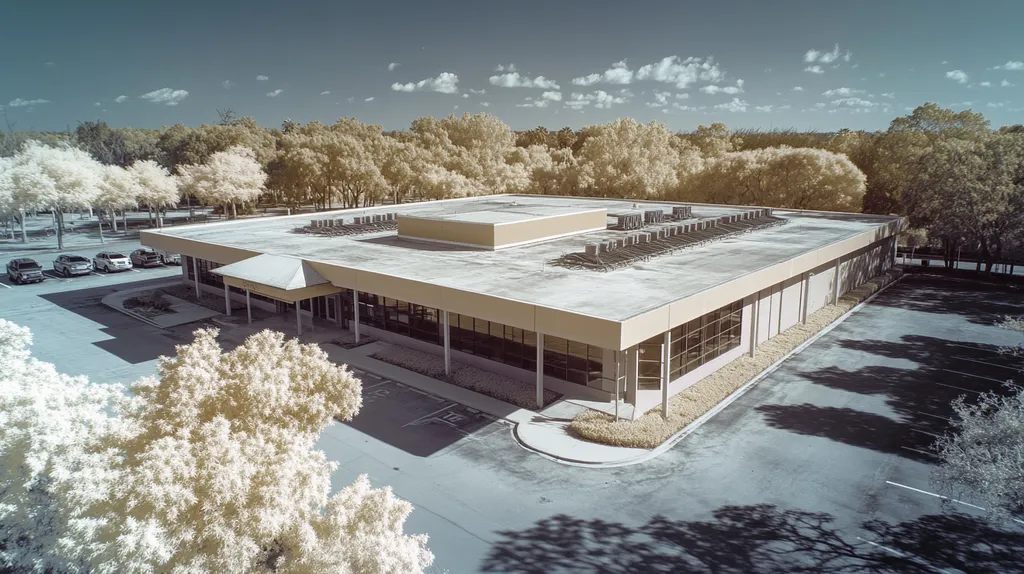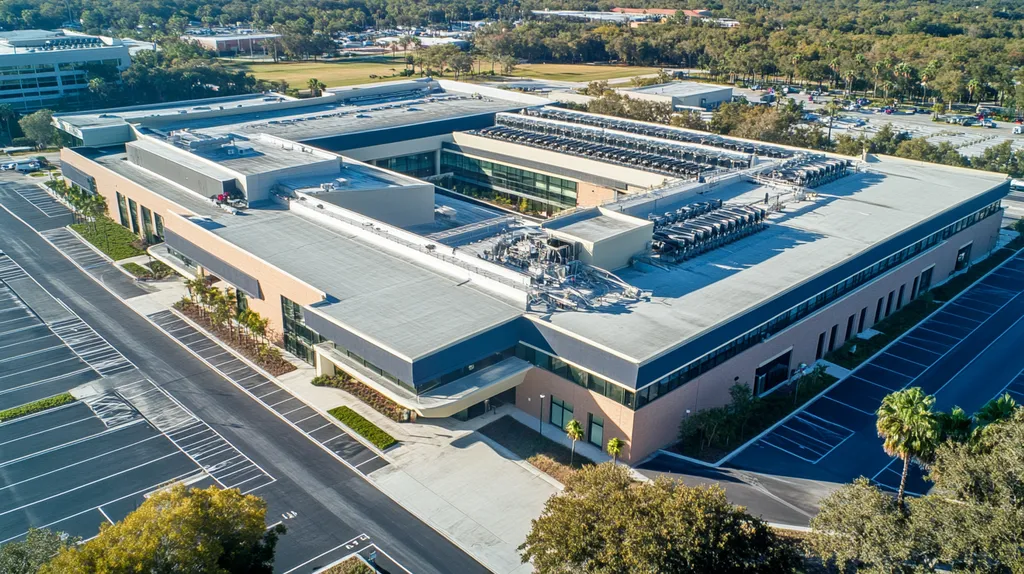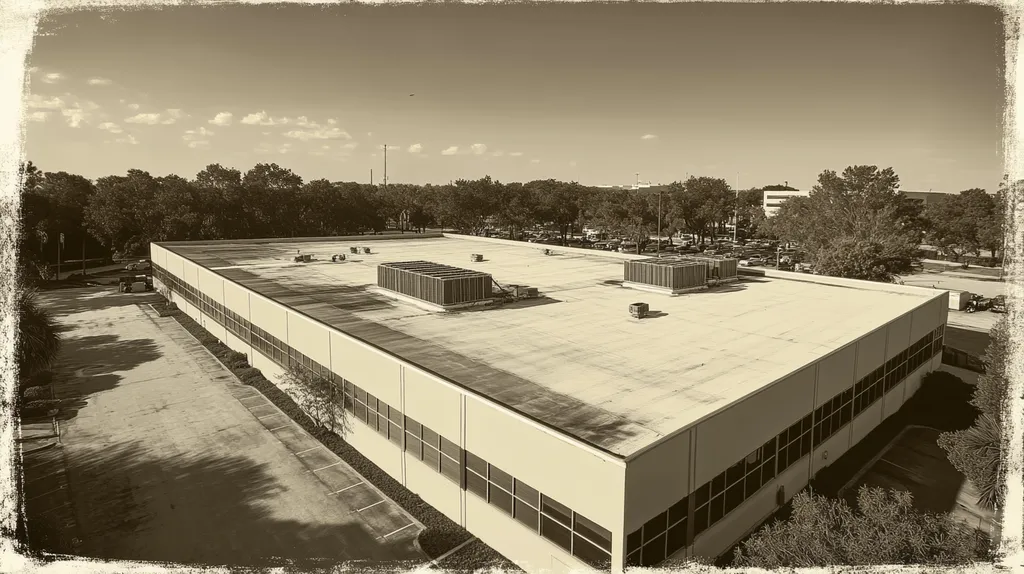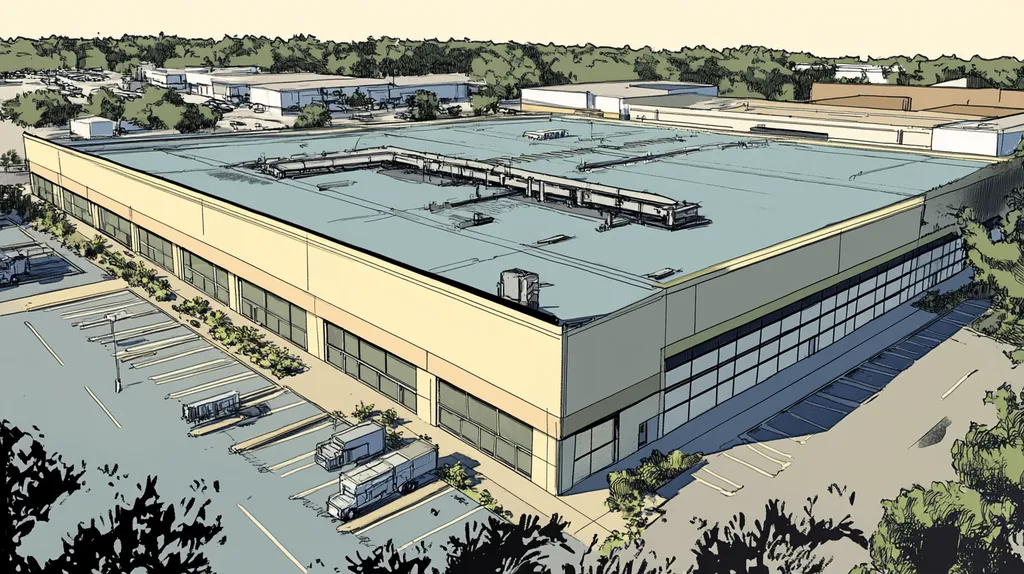Welcome to today’s Battle Royale featuring two roofing heavyweights: “Dumpsters” in the east corner versus “Roll-off Containers” in the west!
Tonight’s showdown pits these contenders against each other across six punishing rounds designed to test every aspect of their performance for the Disposal of Materials from Commercial Roof Projects.
At stake? Millions in potential costs, decades of building protection, and the critical performance demands of modern commercial and industrial facilities.
Our professional judging panel will evaluate each round on technical merit, real-world performance, and value delivery. After all six rounds, we’ll declare our ultimate champion.
Ladies and gentlemen, facility managers and building owners… it’s time to rumble!
ROUND 1: INITIAL COSTS & INSTALLATION
When managing commercial roofing projects, the method chosen for material disposal can make or break both timeline and budget. Poor disposal choices regularly lead to 20-30% cost overruns and significant project delays. The stakes are particularly high for facilities managers dealing with time-sensitive operations where roofing work must be completed within strict maintenance windows.
Material Expenses
Material disposal represents a significant portion of any commercial roofing project’s budget, often accounting for 15-20% of total costs. Understanding the true expenses of each disposal option is crucial for accurate project planning.
Dumpsters typically operate on a straightforward pricing model with fixed weekly rates based on container size. However, weight limitations and overage fees can result in unexpected charges, particularly when dealing with heavy materials like slate or concrete tiles.
Roll-off containers offer more flexible pricing structures based on actual weight and transportation distance. Recent innovations in roll-off design now allow for separated compartments, enabling more efficient material sorting and potential cost savings through recycling programs. (source: 2011 International Roofing Symposium)
ADVANTAGE: ROLL-OFF CONTAINERS
Installation Complexity
The placement and management of disposal containers significantly impacts workflow efficiency and site safety. Poor container positioning can create bottlenecks that slow down the entire project.
Dumpsters offer superior maneuverability in tight spaces and can be positioned closer to building access points. Their smaller footprint makes them ideal for urban environments where space is limited.
Roll-off containers require more extensive staging areas and may need special permits for placement. While their larger size reduces emptying frequency, this advantage is often negated by placement limitations in confined spaces.
ADVANTAGE: DUMPSTERS
Project Timeline
Material removal timing directly affects project duration and labor costs. Delays in waste removal can create hazardous accumulations and force work stoppages.
Dumpsters require frequent emptying, which can interrupt workflow and extend project timelines. Multiple pickup schedules must be carefully coordinated to prevent overflow situations.
Roll-off containers provide greater capacity, reducing removal frequency and potential workflow disruptions. Their larger volume better accommodates sudden material surges during intensive tear-off phases.
ADVANTAGE: ROLL-OFF CONTAINERS
ROUND 1 WINNER: ROLL-OFF CONTAINERS
ROUND 2: DURABILITY & LIFESPAN
The durability and longevity of disposal equipment directly impacts project costs and safety on commercial roofing jobs. Poor container performance can lead to dangerous material spills, project delays, and regulatory violations that cost companies thousands in fines. Selection of appropriate disposal equipment becomes particularly critical during multi-phase projects where containers may remain on-site for extended periods.
Strength and Material Integrity
Container strength determines how effectively roofing materials can be disposed of without compromising worker safety or environmental compliance. Modern disposal equipment must withstand not just weight, but also impact from heavy materials and exposure to weather conditions.
Dumpsters feature reinforced steel construction specifically engineered for heavy debris, with load-bearing capacities reaching 10,000 pounds. Their rigid framework resists warping and maintains structural integrity even under challenging conditions.
Roll-off containers, while spacious, can show signs of stress under concentrated loads. Their more flexible construction, designed for transport efficiency, may require additional reinforcement when handling dense roofing materials.
ADVANTAGE: DUMPSTERS
Longevity and Lifecycle Considerations
The expected service life of disposal equipment significantly affects long-term project planning and budgeting. Equipment replacement cycles must be carefully managed to prevent unexpected failures during critical project phases.
Dumpsters typically maintain their structural integrity for 12-15 years with proper maintenance. Their simpler design means fewer components that can fail, reducing maintenance requirements and extending useful life.
Roll-off containers average 7-10 years of service life due to wear from frequent transportation and loading stress. Their hydraulic systems and moving parts require regular maintenance to prevent premature failure.
ADVANTAGE: DUMPSTERS
Impact on Environmental Sustainability
Environmental impact extends beyond immediate disposal considerations to include the lifecycle sustainability of the containers themselves. Proper material sorting and recycling capabilities have become essential factors in disposal equipment selection.
Traditional dumpsters offer limited options for material separation, potentially increasing landfill waste and environmental impact. Their fixed configuration can complicate recycling efforts for different roofing materials.
Roll-off containers now feature innovative compartmentalized designs that facilitate on-site material sorting. These specialized configurations support more efficient recycling programs while minimizing landfill impact.
ADVANTAGE: ROLL-OFF CONTAINERS
ROUND 2 WINNER: DUMPSTERS
ROUND 3: PERFORMANCE FACTORS
The disposal of materials during a commercial roofing project is critical and urgent. With an estimated 20% of project delays attributed to waste management inefficiencies, selecting the right disposal option can significantly impact timelines and costs. Understanding how dumpsters and roll-off containers perform under real-world conditions is essential for making informed decisions that protect both budget and schedule.
Capacity and Size
Capacity directly impacts workflow efficiency and project timelines on commercial roofing jobs. Even a single day of disposal delays can force work stoppages that ripple through the entire project schedule.
Standard dumpsters offer limited capacity options, typically maxing out at 40 cubic yards. Their fixed dimensions can create challenges when dealing with bulk material removal, often requiring multiple containers and frequent swap-outs.
Roll-off containers provide superior volume capacity, with sizes reaching up to 50 cubic yards. Their design allows for better compression of materials and more efficient use of space during high-volume tear-off phases.
ADVANTAGE: ROLL-OFF CONTAINERS
Ease of Use
Operational efficiency in material disposal can make or break project timelines. Poor container access points and awkward loading requirements waste valuable labor hours and create safety risks.
Dumpsters present accessibility challenges with their high sides and limited entry points. Workers often must lift heavy materials over container walls, increasing strain and slowing the disposal process.
Roll-off containers feature ground-level loading capabilities and wider access points. Their innovative designs now include separated compartments for different materials, streamlining the sorting process. (source: 2011 International Roofing Symposium)
ADVANTAGE: ROLL-OFF CONTAINERS
Recycling and Sustainability
Environmental compliance and recycling capabilities have become critical factors in disposal equipment selection. Proper material sorting can reduce disposal costs by up to 30% through recycling credits and reduced landfill fees.
Traditional dumpsters offer minimal flexibility for material separation. Their single-compartment design often results in recyclable materials being mixed with general waste, increasing environmental impact and disposal costs.
Roll-off containers excel in supporting sustainable disposal practices. Modern units feature multiple compartments that enable efficient on-site sorting of recyclable materials like metal flashing and reusable insulation.
ADVANTAGE: ROLL-OFF CONTAINERS
ROUND 3 WINNER: ROLL-OFF CONTAINERS
ROUND 4: MAINTENANCE REQUIREMENTS
Maintenance requirements for disposal equipment can make or break a commercial roofing project’s efficiency and profitability. Poor maintenance practices lead to equipment failures that create costly delays, with studies showing that improper waste management accounts for up to 25% of unexpected project overruns.
The stakes are particularly high for facilities operating under strict maintenance windows, where equipment downtime can force complete work stoppages. Understanding these maintenance implications is crucial for making informed disposal equipment decisions.
Daily Operation Requirements
Regular maintenance tasks directly impact labor costs and project timelines. Equipment that requires extensive daily attention diverts workers from core roofing activities, reducing overall productivity.
Dumpsters demand minimal daily maintenance, typically requiring only basic inspection and debris cleanup around the container. Their simple design means fewer components to monitor and maintain during operation.
Roll-off containers need more frequent attention due to their mechanical components, including hydraulic systems and loading mechanisms. Daily checks of these systems are essential to prevent unexpected failures that could halt material disposal.
ADVANTAGE: DUMPSTERS
Preventive Maintenance Schedules
Strategic maintenance planning directly affects equipment reliability and project continuity. Proper scheduling of preventive maintenance minimizes unexpected breakdowns and associated project delays.
Dumpsters require basic quarterly maintenance focused primarily on structural integrity checks and rust prevention. Their straightforward construction reduces the complexity of maintenance procedures.
Roll-off containers demand monthly inspections of hydraulic systems, moving parts, and safety mechanisms. While more involved, these maintenance requirements help prevent catastrophic failures during critical project phases.
ADVANTAGE: DUMPSTERS
Emergency Repairs and Support
The speed and efficiency of emergency repairs significantly impact project timelines. Equipment failures that require extensive repair time can create cascading delays throughout the project schedule.
Dumpster repairs often require complete container replacement, which can lead to extended material handling delays. Their fixed construction makes on-site repairs impractical in most situations.
Roll-off containers benefit from modular designs that facilitate rapid component replacement and on-site repairs. Most rental providers maintain mobile repair units that can address common issues without removing the container from service.
ADVANTAGE: ROLL-OFF CONTAINERS
ROUND 4 WINNER: DUMPSTERS
ROUND 5: SUSTAINABILITY CREDENTIALS
Environmental impact has become a defining factor in commercial roofing projects, with disposal methods directly affecting both compliance and costs. Studies show that roofing materials account for up to 40% of construction waste in landfills, making sustainable disposal crucial for environmental stewardship and regulatory compliance.
Modern facility managers face increasing pressure to demonstrate measurable sustainability improvements, with material disposal practices now directly impacting environmental certifications and corporate sustainability goals.
Recycling and Waste Diversion
Effective material sorting and recycling capabilities have become essential requirements for commercial roofing projects. The ability to separate and recycle materials can reduce disposal costs by up to 40% through reduced landfill fees and recycling credits.
Traditional dumpsters offer limited options for material separation, often resulting in recyclable materials being mixed with general waste. Their single-compartment design makes it difficult to maintain proper sorting practices, especially during intensive tear-off phases.
Roll-off containers now feature innovative compartmentalized designs that facilitate efficient on-site sorting of different materials. These specialized configurations make it easier to separate valuable recyclables like metal flashing and reusable insulation from general waste.
ADVANTAGE: ROLL-OFF CONTAINERS
Lifecycle and Environmental Impact
The total environmental impact of disposal methods extends beyond simple waste management to include transportation efficiency and material handling. Proper equipment selection can significantly reduce the carbon footprint of roofing projects.
Dumpsters typically require frequent emptying, resulting in increased transportation emissions and energy consumption. Their limited capacity often leads to multiple trips that compound environmental impact.
Roll-off containers optimize transportation efficiency through larger capacity and better material compression. Their design reduces the number of required trips while supporting more efficient recycling processes.
ADVANTAGE: ROLL-OFF CONTAINERS
Compliance and Certification Standards
Meeting environmental regulations and certification requirements has become increasingly complex for commercial roofing projects. Equipment selection directly impacts a facility’s ability to achieve sustainability certifications and maintain regulatory compliance.
Traditional dumpsters often struggle to meet evolving environmental standards due to their limited sorting capabilities. Their use can complicate documentation requirements for LEED certification and similar programs.
Roll-off containers better align with current sustainability standards and certification requirements. Their advanced features support detailed waste tracking and documentation needed for environmental compliance reporting.
ADVANTAGE: ROLL-OFF CONTAINERS
ROUND 5 WINNER: ROLL-OFF CONTAINERS
ROUND 6: SPECIALIZED APPLICATIONS
Specialized roofing projects demand carefully tailored disposal solutions that can make or break project success. With complex material requirements, site constraints, and evolving regulations, choosing the wrong disposal method can trigger costly delays and compliance violations. Recent industry data shows that improper waste management solutions increase project costs by up to 35% and extend timelines by weeks on specialized commercial roofing jobs.
Environmental Sensitivity
Environmental requirements have become increasingly stringent for commercial roofing projects, with facilities facing strict material disposal regulations. Proper handling of specialized materials like solar panels, green roofing components, and recyclable membranes requires disposal solutions that protect both compliance and sustainability goals.
Traditional dumpsters offer basic waste containment but lack the sophisticated sorting capabilities needed for complex environmental materials. Their limited configuration options often result in recyclable materials being mixed with general waste, increasing disposal costs and environmental impact.
Roll-off containers feature advanced compartmentalization designed specifically for environmental applications. These specialized configurations enable precise sorting of different material types while maintaining clear chain-of-custody documentation for regulated substances.
ADVANTAGE: ROLL-OFF CONTAINERS
Building Constraints
Site limitations and building access restrictions create unique challenges for material disposal on specialized roofing projects. Tight urban environments, historic properties, and facilities with limited staging areas require disposal solutions that maximize space efficiency without compromising material handling capacity.
Dumpsters provide excellent maneuverability in confined spaces and can be strategically positioned to minimize site impact. Their compact footprint makes them ideal for projects with limited staging areas or strict preservation requirements.
Roll-off containers, while offering greater capacity, often struggle with placement in constrained environments. Their larger size and specific delivery requirements can create logistical challenges that impact project efficiency.
ADVANTAGE: DUMPSTERS
Regulatory Compliance
Specialized roofing applications frequently involve materials requiring specific handling and documentation procedures. From asbestos-containing materials to chemical treatments, proper disposal directly impacts regulatory compliance and liability exposure.
Dumpsters can complicate compliance tracking due to their limited sorting capabilities and documentation features. Single-compartment designs make it difficult to maintain proper separation of regulated materials from general waste. (source: Dumpsters.com)
Roll-off containers excel in regulatory compliance with features specifically designed for handling specialized materials. Their advanced tracking systems and separated compartments ensure proper documentation while maintaining clear material segregation throughout the disposal process.
ADVANTAGE: ROLL-OFF CONTAINERS
ROUND 6 WINNER: ROLL-OFF CONTAINERS
AND THE WINNER IS…
After six grueling rounds of technical analysis, the judges’ scorecards are in! With a dominant 4-2 victory, ROLL-OFF CONTAINERS have claimed the championship belt in commercial roofing disposal!
The champion demonstrated superior performance in critical categories including initial costs, performance factors, sustainability credentials, and specialized applications. Its innovative compartmentalized design, superior capacity, and advanced environmental features proved decisive advantages in today’s demanding commercial environment.
But don’t count DUMPSTERS out completely! Their victory in the durability and maintenance rounds proves they remain a fierce competitor, especially in urban environments with tight space constraints or projects requiring minimal daily maintenance oversight.
However, every building tells its own story. Local regulations, site conditions, and specific project requirements can dramatically impact disposal solution performance. While this analysis provides strategic guidance, it cannot account for all variables that might influence your specific situation. Property owners and managers should always consult qualified roofing professionals who can evaluate their unique circumstances.
Ladies and gentlemen, in the high-stakes arena of commercial roofing, success depends on matching your facility’s specific requirements with the right disposal contender’s strengths. Choose wisely – your building’s future is on the line!
FREQUENTLY ASKED QUESTIONS
Q. What are the cost differences between dumpsters and roll-off containers for commercial roofs?
A. Dumpsters typically have fixed weekly rates based on size, with potential hidden costs for weight. Roll-off containers vary in pricing based on actual weight and distance, allowing better budgeting.
Q. Which is more durable for an industrial roof project?
A. Dumpsters are built with reinforced steel for heavy debris and last longer than roll-off containers. Roll-off containers may require more maintenance due to their design and exposure to heavy materials.
Q. How does container performance affect commercial roof project timelines?
A. Delays in waste removal can halt roofing projects. Roll-off containers allow for fewer pickups, minimizing workflow interruptions compared to standard dumpsters.
Q. Which type requires more maintenance for commercial roofing tasks?
A. Dumpsters require minimal daily upkeep and quarterly maintenance checks. Roll-off containers need regular inspections of hydraulic systems and moving parts for optimal functioning.
Q. How do disposal methods impact sustainability for commercial roofs?
A. Roll-off containers support effective recycling and sorting, enhancing sustainability efforts. Dumpsters often mix recyclables with general waste, increasing landfill contributions and hindering environmental goals.
Q. Which disposal method is better for urban commercial roofing applications?
A. Dumpsters excel in urban settings due to their smaller footprint and maneuverability. Roll-off containers require more space, potentially complicating disposal logistics in crowded environments.
Q. Can I recycle materials from my commercial roof project?
A. Yes, recycling is possible with both disposal methods, but roll-off containers offer better sorting capabilities. Using roll-off containers allows for better separation of materials, improving recycling rates.









